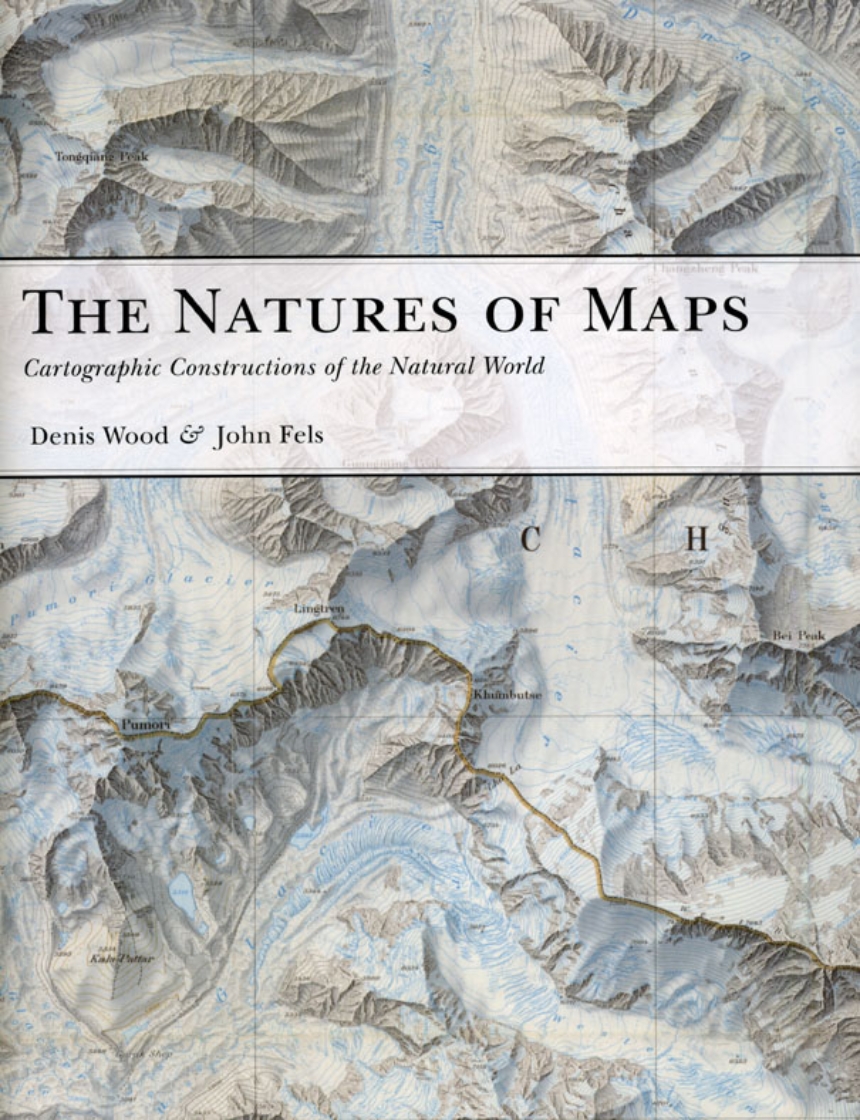The Natures of Maps
Cartographic Constructions of the Natural World
Cartographers have known for decades that maps are far from objective representations of the world; rather, every map reflects the agendas and intentions of its creators. Yet that understanding has had almost no effect on the way maps are viewed and used by the general public. In The Natures of Maps, cartographers Denis Wood and John Fels present a compelling exploration of a wide range of maps to answer the question of, as they put it, why maps have “gotten away with it.”
To answer that question, the authors turn to a category of maps with a particularly strong reputation for objectivity: maps of nature. From depictions of species habitats and bird migrations to portrayals of the wilds of the Grand Canyon and the reaches of the Milky Way, such maps are usually presumed—even by users who should know better—to be strictly scientific. Yet by drawing our attention to every aspect of these maps’ self-presentation, from place names to titles and legends, the authors reveal the way that each piece of information collaborates in a disguised effort to mount an argument about reality. Without our realizing it, those arguments can then come to define our very relationship to the natural world—determining whether we see ourselves as humble hikers or rampaging despoilers, participants or observers, consumers or stewards.
Richly illustrated, and crafted in vivid and witty prose, The Natures of Maps will enlighten and entertain map aficionados, scholars, and armchair navigators alike. You’ll never be able to look at Google Maps quite the same way again.
To answer that question, the authors turn to a category of maps with a particularly strong reputation for objectivity: maps of nature. From depictions of species habitats and bird migrations to portrayals of the wilds of the Grand Canyon and the reaches of the Milky Way, such maps are usually presumed—even by users who should know better—to be strictly scientific. Yet by drawing our attention to every aspect of these maps’ self-presentation, from place names to titles and legends, the authors reveal the way that each piece of information collaborates in a disguised effort to mount an argument about reality. Without our realizing it, those arguments can then come to define our very relationship to the natural world—determining whether we see ourselves as humble hikers or rampaging despoilers, participants or observers, consumers or stewards.
Richly illustrated, and crafted in vivid and witty prose, The Natures of Maps will enlighten and entertain map aficionados, scholars, and armchair navigators alike. You’ll never be able to look at Google Maps quite the same way again.
231 pages | 179 color plates, 16 halftones | 11 x 11 | © 2008
Biological Sciences: Natural History
Earth Sciences: Environment
Geography: Cartography, Environmental Geography
Reviews
Table of Contents
Acknowledgements
Foreword
A note to the reader
Introduction: Don’t skip this
Part I
One: The nature of maps
Two: The propositional logic of the map
Three: Reading Land of Living Fossils
Part II
Four: Threatened nature
Five: Threatening nature
Six: Nature as grandeur
Seven: Nature as cornucopia
Eight: Possessable nature
Nine: Nature as a System
Ten: Nature as mystery
Eleven: Nature as park
Bibliography
List of key maps
About the authors
Foreword
A note to the reader
Introduction: Don’t skip this
Part I
One: The nature of maps
Two: The propositional logic of the map
Three: Reading Land of Living Fossils
Part II
Four: Threatened nature
Five: Threatening nature
Six: Nature as grandeur
Seven: Nature as cornucopia
Eight: Possessable nature
Nine: Nature as a System
Ten: Nature as mystery
Eleven: Nature as park
Bibliography
List of key maps
About the authors
